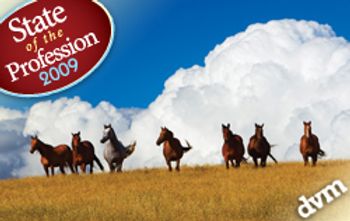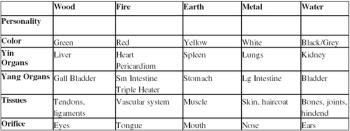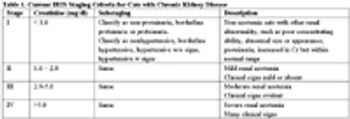
A Purdue study has shown a higher incidence of heart disease in dogs with bad gums.

Nashville, Tenn. -- Nutro Products Inc., the makers of Greenies(r) treats, announced April 8 that the Greenies line now will be sold exclusively through veterinary hospitals and pet specialty retailers.

Dr. Shelley Lenz refuses to be typecast into the role of overworked, underpaid rural vet.

This special offer saves students more than $400 on CVC East conference registration.

Phoenix -- A new million-dollar campaign to increase awareness among pet owners of choosing accredited care services has been launched by the American Animal Hospital Association.

Many shelters are faced with diseases that seem resistant to typical treatment protocols.

According to the National Research Council, the term "senior" refers to an animal's functionality, such as decreased activity, weight gain, and other age-related physical and behavioral changes.

Traditional Chinese Veterinary Medicine (TCVM) is a complete system of medicine to prevent, diagnose, and treat disease.

Traditional Chinese Medicine (TCM), also known as Traditional Oriental Medicine (TOM) has been utilized over several thousands of years in people and animals.

Liver disease is common in the cat and the finding of icterus is a frequently a clinical clue that the cause is primary liver disease.

The detection of abnormal liver biochemical tests in the asymptomatic as well as the symptomatic patient is a common finding on the routine blood screen.

Vaccination is an important tool in veterinary medicine, preventing disease and reducing virus circulation for many important viral pathogens.

Several hepatobiliary disorders have recently come under increased awareness in dogs.

Acupuncture is the insertion of needles into specific points on the body (acupoints) to cause a desired healing effect.

The discussion below is directed at therapy for chronic hepatitis but much of what is presented can also be extrapolated to other types of liver disease in both the dog and cat.

Chronic renal insufficiency involves the permanent damage to any part of the nephron.

Chronic hepatitis is an etiologic diverse and morphologically variable condition associated by mixed inflammatory cell infiltrates.

Chronic kidney disease and failure is invariably progressive; however, stable disease and a reasonable quality of life can be obtained for some time in most cats.

The so-called "reactive hepatopathies" which occur secondary to non-hepatic disease can result in increased serum biochemical hepatic tests and histomorphologic abnormalities.

Qi is difficult to translate into Western language. Fundamentally, Qi is what gives life to the universe.

Hepatic lipidosis accounts for approximately 50% of feline liver disease.

Complementary and alternative medicine (CAM) is viewed by many veterinarians as an "us against them" proposition.

The National Center for Complementary and Alternative Medicine (NCCAM), a component of the National Institutes of Health, defines CAM as "a group of diverse medical and health care systems, practices, and products that are not presently considered to be part of conventional medicine."

This article presents new drugs and procedures that have been very helpful in leading to recovery, from lasers, to electromagnetic resonance, to hyperbaric oxygen chambers that do not cost an arm and a leg.

Generally, coping with disorders in small animal reproduction, is a rewarding subspecialty in veterinary medicine.

Dystocia is defined as difficulty in the normal vaginal delivery of a neonate from the uterus. Dystocia must be diagnosed in a timely fashion for medical or surgical intervention to improve outcome.

Round cell tumors are commonly detected as cutaneous or subcutaneous masses. However, the majority of these tumors also appear in other locations.

The information presented here on practical readiness is provided to help clinicians and staff manage patients in the most efficient way possible.

When a patient first arrives we have all been taught the ABCs of emergency care.

When presented with animals with evidence of renal dysfunction (as evidenced by elevated serum creatinine concentration), there are a few considerations.